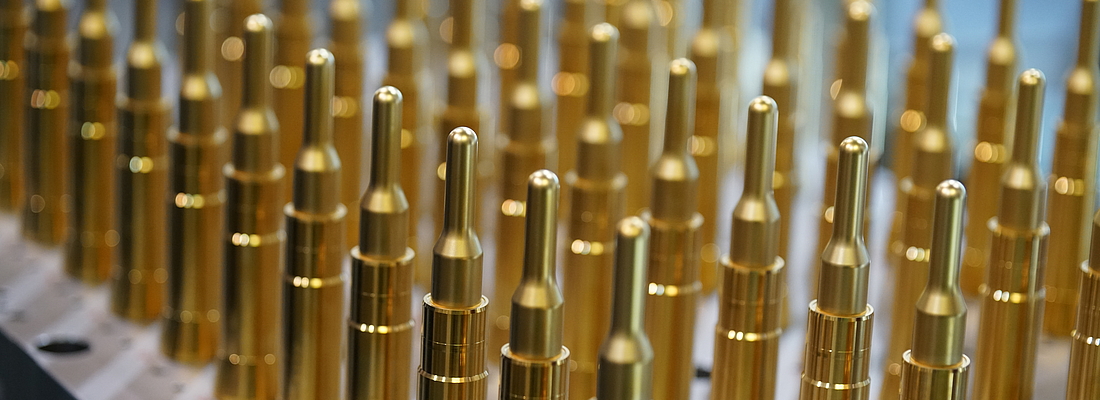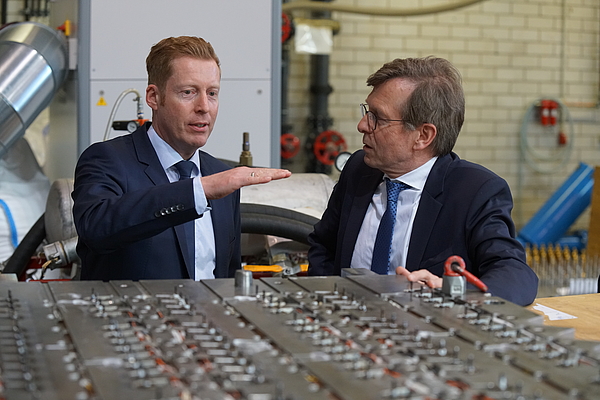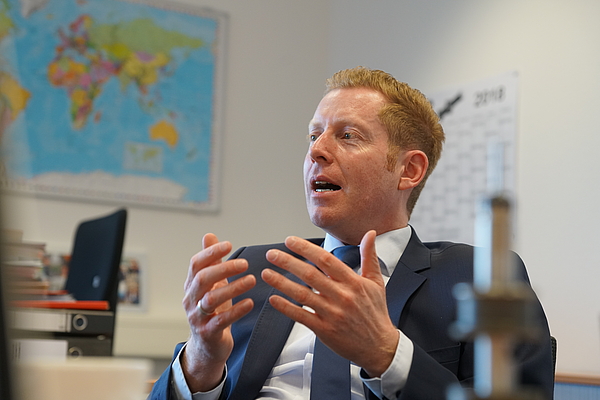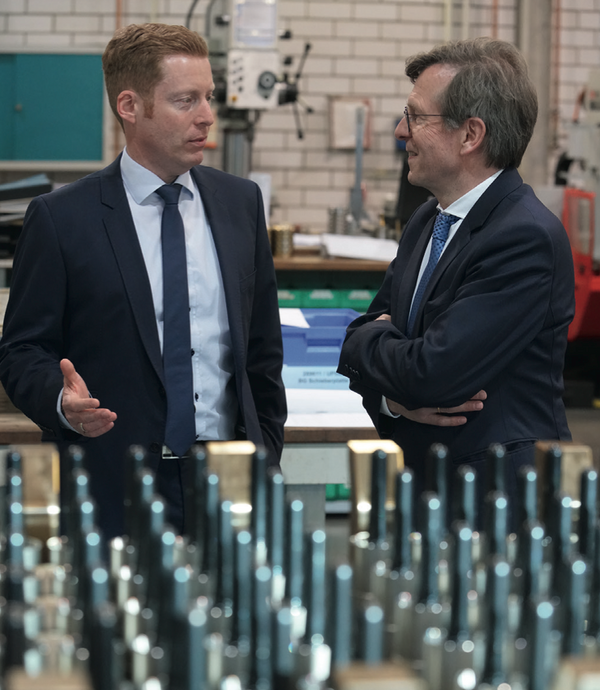

MHT was founded in 1996 and has enjoyed global success for more than 20 years. We spoke with the new CEO, Christian Wagner, about the challenges faced by a medium-sized company, about the company’s past and future, and about PET packaging as a demanding, global niche market in plastics processing.
An Interview with Christian Wagner, CEO of MHT
Mr Wagner, you have been withMHT since it was founded 21 yearsago and since 1 December 2017,you have been solely responsiblefor running the company. What newpersonal challenges await you asthe new CEO?
I’ve known this company since the beginning. I’ve come to know it better every day, as I have seen it from different perspectives and positions within the company. I started working here when Iwas a student. The fascination I felt as abudding machine engineer has never leftme. As your tasks and responsibilities grow, so do you, so to speak, and Irose to the challenge. Today, as CEO of MHT, I see it as my principle task – and Ithink this is the case for many medium sized companies – to ensure thecompany’s future is safe. I feel that it’sparticularly important that MHT is an attractive employer, so that we appealto the best employees at all levels. Thisallows us to meet the requirements ofthe market and, above all, respond tofuture challenges such as digitalisationand energy reduction with innovativesolutions. This is a responsibility that Ihaven’t really felt or perceived myself yet, at least not fully, at MHT.
What position do you think MHT iscurrently in?
Firstly, I’d like to say that I’m happyto be assuming responsibility forMHT at a time in which the companyis in an outstanding economicposition – this wasn’t always the case. An important requirement for this stability was created when we settled the protracted legal dispute withHusky in 2016.

Could you say that you’ve finally stepped out of Husky’s shadow?
Yes, definitely. We were very worriedabout it, actually. The settlement allowed us to direct our focus back ontothe market, our clients and technologicaldevelopments. Our moulds meet thehighest technical standards. Theyare in demand and enjoy an excellent reputation. This is not just a foundationto rest upon, but one that we can buildupon strategically.
What is your role in the market today?
Today, more than ever, we see ourselves as the only truly independent mould manufacturer, and we feel right at home in this sector. MHT has a presence on all essential PET platforms, where it satisfies the most stringent requirements. We’ve made a name for ourselves in the technically difficult market segment of high cavity applications in particular. I can proudly claim that with our 144- and 192- cavity moulds, we have been driving the trend towards productivity optimisation since 2001. Since that time, the maximum cavity number for all PET systems has steadily increased. Today, MHT offers the complete package, in other words, not just mould technology, but a post-mould cooling system that is often more technically advanced than OEM products.

How do you see MHT’s future in a rapidlydeveloping global market?
MHT is the only mould supplierwith expertise in the entirerange of existing PET systems. Of course, our standard mouldsare technologically excellentand available ready-made, but we also offer solutions formore challenging, individualcases. This brings us full circle,because engaging intensely with complex special topics,in turn, contributes to thequality, performance andease of maintenance of our standard products. I feel thatthe most important factors forconsolidating and expanding ourmarket position are proximityto our customers and partners. In both cases, this involves working togetherto develop technical solutions – including forcomplex problems. This creates added value.
This brings us to the topic of strategic aims. Which strategic aims would you like to achieve in the medium-term?
I’m pursuing four goals. In no particular order, these are:
- integrating the mould into a digitalized overall process
- expanding our reputation as a supplier of innovative products
- pursuing cooperative partnerships
- ensuring that we are an attractive employer
What role does the sensor technology play for the mould?
Sensor technology offers the opportunity, for example, for recognising any tilting of the mould or for detecting vibrations. We can build a lot of sensors into the moulds these days... but who processes the data in the “injection moulding” system and how? The market leader, for example, uses chips to exchange data between the mould and the machine. These chips record how the mould is used or what condition the hot runner is in. If these kinds of chips are used to keep the competition away... that’s a different story altogether. Users expect an open system.
What are MHT’s latest product innovations?
When talking about our latest innovations, I always like to mention our hot runner technology and our developments in the post-mould cooling line In recent years, we’ve been primarily focussed on the performance of hot runners, the two most noteworthy examples being the second generation of our Vulcan Valve Gate components and our new generation of hot runners, MHTheatCONTROL. The latter will be launched soon. All our efforts are focussed on considerably extending maintenance intervals, noticeably enlarging the process window and saving energy. There’s still a lot to do here – the melt which is retrieved from the machine is hot. Here we should find a better way to avoid additional heating in the mould. As the cooling in the cold half relies on extreme cold cooling water, the machine should be equipped with a dehumifier to avoid condensation – that ?s another area where we need to find an appropriate solution. Our new hot runner technology gives us technological leadership in this area – the hot runners are the mould manufacturer’s calling cards.
What role does the post-mould cooling play?
Extremely short cycle times bring the topic of cooling much more into focus. You could be tempted to say that there is a tendency towards using another mould outside of the mould – in other words, forming and cooling kept separate. This means that harmony between the moulds and the post-mould cooling technology is of significant importance. We have quite strong expertise here. We’ve expanded our product range in the post-mould cooling area considerably – we offer excellent post-mould cooling technology for all PET systems on the market.

Which technological developments and challenges do you see for the PET preform injection moulding?
The core principles are raising energy efficiency, increasing long-life cycle and digitalising the processes, whereby the development projects often exhibit overlaps. This way, an optimal, energy- efficient process that conserves materials isn’t really conceivable without constant monitoring and data processing. Electronics will have a stronger presence in the mould. Modern mould manufacturers have to surrender to these new tasks. However, PET injection moulding technology hasn’t yet been fully exploited. I think that lightweighting has more potential. We’re working with promising technologies so we can develop preform wall thickness within the mould, making it as thin as possible and as thick as necessary in all areas.. MHT will be publishing news about this soon.
In your opinion, what are the future key technologies for manufacturing PET preforms and PET bottles?
As I said, I see the future of the mould as an important element within an overall digitalised process. This won’t be limited to the interplay between the mould, the injection moulding machine, the post-mould cooling unit, the dryers and the chiller. We will see more and more cases where production processes that have, until now, been kept completely separate, i.e.: preform injection moulding and stretch blow moulding, are being united under one roof. The logical consequence will be closer integration of these processes. I feel it’s only a matter of time before the large manufacturers adopt this approach, if they haven’t done so already...
What role does MHT play, then, as a mould manufacturer?
To be prepared for the future, MHT is expanding its hard-hitting development department. We want to be part of shaping the process! More than 40 active patent families are, I think, a clear sign of our innovativeness. Continuous cooperation, with state-supported research projects, universities and research institutions, too, are more than helpful here.
Which role falls to your employees when facing the existing challenges and technological breakthroughs?
By far, they have the most important one! Above all, it’s about flexibility and modern thinking. Necessary requirements for being able to face these constantly changing challenges. These changes are happening, no matter what people say. The technological development and quality of our products are carried by the creativity and knowledge of our staff. Thanks to employees who are curious in the face of change, that are prepared to think outside the box and that are in their element in the face of new challenges, MHT remains an innovation-driven company.
As a medium-sized company, how can you ensure you find the right people, win them over and keep them on staff long term?
Our company is full of interesting projects in an international field of business. There’s no shortage of attractive job offers. This is something we, as an employer, need to exploit more.
We are located in the Rhine-Main area well known for high qualified staff. However, as employer we have to attract upcoming employees presenting ourselves as a modern employer. Alongside recruiting well-qualified new staff, we’re also ensuring that we keep our people at the highest level, both personally and professionally. For example, we do this through programs that demonstrate the prospects for further development within MHT. Our motto was and still is: “Creating a business environment in which our employees can feel comfortable, valued and safe”. This means that you have good chances for total commitment and high performance. Employee feedback indicates that we’re on the right track with our corporate culture as an SME, our understanding of management and also thanks to economic stability. I’m certainly proud of the fact that more than 75% of our employees have been with us for over ten years now.
Let’s talk about the market. What are MHT’s key regions in the near future?
MHT currently delivers to over 80 countries. One focus of our sales activities is in the Middle East and Africa, where we have already installed a large number of moulds. We’re reinforcing our activities in these regions. We also see growth potential in North and Central America, where we were able to acquire important reference clients last year. Plus, let’s not forget India. In Asia, we’re concentrating our sales activities on South East Asia in particular, with a special focus on Thailand.
Last year, the closure of your Luxembourg subsidiary led to the relocation and concentration of capacities at the Hochheim site. What was the reason for this?
The proximity to Frankfurt International Airport is clearly an advantage, both in terms of sales and maintenance visits. We can reach our customers at any time, quickly and without complication. Engineers are close to their products and sales engineers are close to their projects and to the newest information. There’s also a clear advantage for our staff... a shorter commute to and from work means more free time. I’ve already spoken about our central location – we’re all benefiting, in every respect.
What are your plans for the MHT USA subsidiary, founded over 11 years ago?
Our subsidiary is extremely important for the large US and Mexican markets. We’re planning a successive expansion, above all in the sales and maintenance departments. Additionally, the MHT USA subsidiary is now responsible for the Americas as a whole.

Let’s talk briefly about the production line here in Hochheim. How have you set this up?
Of course, a priority is on keeping manufacturing quality high and costs low. Alongside our product-specific innovations, we have also established new, optimised and highly automated production processes. We’re going to keep working on these aspects as these are the cornerstones that will guarantee our company’s future. Our production concentrates on the essential components such as stack parts, wear parts and slides. The other parts – including moulding plates – are procured from our network of suppliers according to our design specifications. By concentrating on these central elements, it’s possible for us to use highly complex production centres that can be adapted and developed in the best way using our existing knowledge. Thanks to the combination of different production processes, measuring systems, storage systems for raw materials and finished parts and robot equipment, we’re in the position to conduct a lot of production steps in one set-up. This means there are fewer transport steps, which give a boost to both productivity and quality! These complex systems are used both in preproduction and in final processing. With our specialised production, we’re completely prepared for the challenges of high-cavity applications.
Can MHT also produce customised designs?
We are certainly good when it comes to customisations. Customers at MHT are sure to receive exactly the technical mould solutions they need.
Thank you for taking the time to talk to us.
The comPETence center provides your organisation with a dynamic, cost effective way to promote your products and services.

magazine
Find our premium articles, interviews, reports and more
in 3 issues in 2025.



